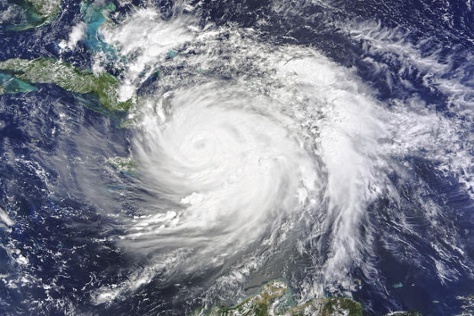Natural disasters often strike with little to no warning, but their operational and economic impact to organizations can be devastating. As scientists expect the future will likely include more cases of extreme weather, organizations should leverage the calm before the storm to ensure that business continuity plans address key impacts of a natural disaster event. Preparation is the best defense against these disasters, and the time for preparing is now – before disaster strikes.
Key elements that business continuity plans should incorporate include the potential operational and economic impact of such events, particularly in light of previous natural disasters. Specifically, the aftermath and losses of Hurricane Sandy in 2012 and the more recent mandatory evacuation of the Eastern seaboard during Hurricane Matthew in 2016 highlight the importance of business continuity planning and preparedness.
A recent study conducted by a leading insurance provider found that 48 percent of all small businesses do not have a business continuity plan. The Federal Emergency Management Agency (FEMA) estimates that 40 percent of businesses do not reopen after a disaster, and another 25 percent fail within one year. The factor underlying this failure rate is business’ fundamental under-preparedness. Compounding the problem is the lack of understanding of the scope and breadth of insurance coverage or government provisions.
As a best practice, all businesses should have a business continuity plan and a disaster recovery plan to address crisis situations such as a natural disaster. The following are general guidelines, with specific focus on considerations for natural disasters:
Planning
- Understand and document the normal structure, policies, practices and personnel involved with the business.
- Identify the business activities necessary for continued operation during a disruption. In doing so, consider the business’ supply chain in order to assess essential supply lines for operation.
- Identify the threats that place the business at risk.
- Understand the vulnerabilities that threats can exploit and the business impact if these vulnerabilities are not mitigated.
- Review existing insurance policies to fully understand the business coverage, deductibles and limits to coverage. For many businesses, insurance policies do not cover flood or earthquake damage.
- Designate and retain contact information for stakeholders that are critical to business operations, such as employees, banks, lawyers, accountants and suppliers.
- Identify the key individuals who will activate the plan; designate a crisis management team for stewardship and interoperability among business lines.
- Develop a systematic process to back up records that are not easily reproduced, such as insurance documents, legal contracts, tax returns, and accounting statements.
- Save all your designated contacts and documents in an alternate, accessible off-site location.
Implementation
When a natural disaster strikes, or there is a threat of impending weather, the designated individuals and crisis management team should implement the business continuity plan to limit loss of life, destruction of property and business interruption, taking into account the following:
- Enact a procedure for receiving and responding to warnings from outside agencies and emergency responders.
- Follow internal corporate communications to disseminate information.
- Transfer electronic records and computer backups to secure off-site locations.
- Secure all utilities including water heaters, gas tanks, and heaters and, if necessary, raise them to elevated locations to avoid water damage.
- Ensure fire protection systems are in proper working order.
- Fill emergency generators with fuel and contact fuel suppliers with anticipated needs for post-storm deliveries.
- Instruct employees with laptops to take them home at the end of each day and confirm they can connect remotely to the business’ server.
- Communicate the need for everyone to stay inside and away from windows, skylights and glass doors. Identify and designate safe areas in the facility (such as an interior reinforced room, closet or bathroom on the lower floor) if the storm becomes severe.
- Ensure the business emergency supply kit is fully stocked. The Federal Emergency Management Agency (FEMA) has prepared comprehensive emergency preparedness materials to highlight the importance preparedness, before, during and after a disaster.
Disaster recovery
Successful recoveries depend upon business disaster-preparedness planning. After a disaster occurs, businesses should quickly assess the situation to ascertain physical damage and impact to operations, incorporating the following considerations:
- Prepare for and communicate to employees that access to affected areas will be controlled. Specifically, employees may not have access to the business facility until search and rescue operations are complete and safety hazards are cleared.
- Use caution before entering your business. Check for power lines, gas leaks and structural damage.
- Inspect the physical structure of the business location, and identify areas that may have sustained damage. Prepare loss information for insurance claims.
- Implement interim business procedures to begin operations as early as possible.
- Initiate critical employee response prior to full recall of workforce.
- Establish alternate business site operations as necessary.
- Establish telephone communications between employees and with local agencies and law enforcement.
- Restore data communications with primary (if available) or secondary backup center.
- Establish priorities for work normalization, and assess operational backlogs.
With a bit of foresight and planning, organizations can mitigate a broad range of risks may impact operational and business activity in the aftermath of a natural disaster. Secondary complications such as supply chain impact or employee accessibility work location all must also be addressed through proper business continuity planning. Ideally, you will never have to activate your business continuity plan in response to a natural disaster, but developing one is certainly time well spent.


